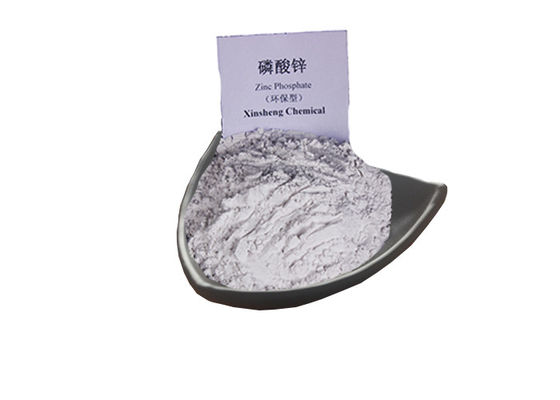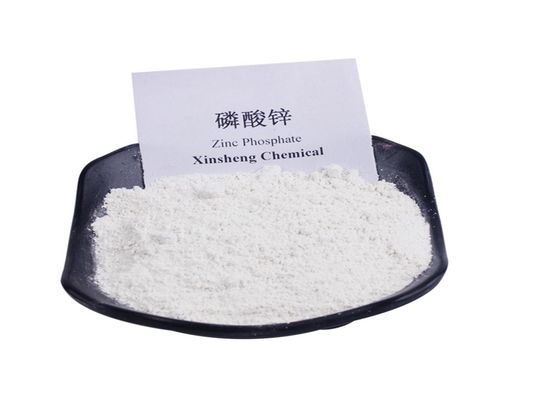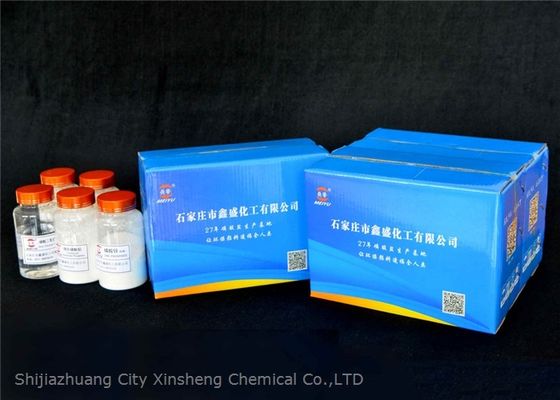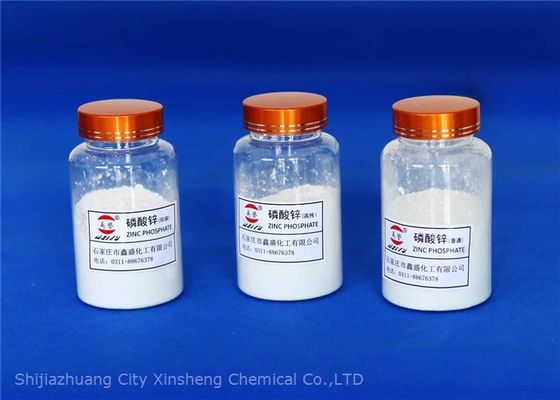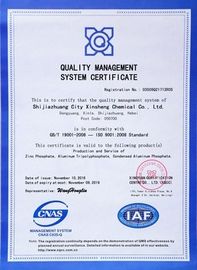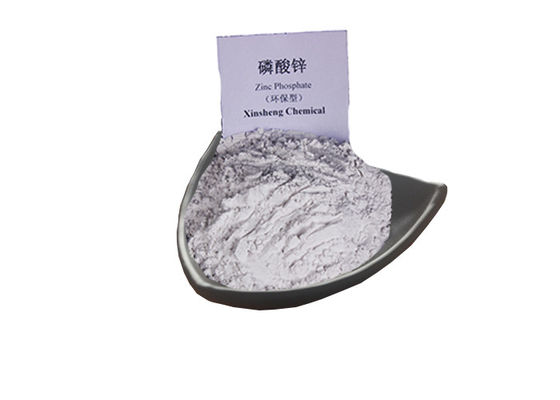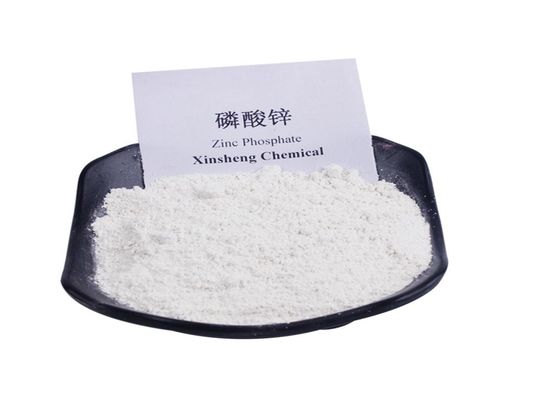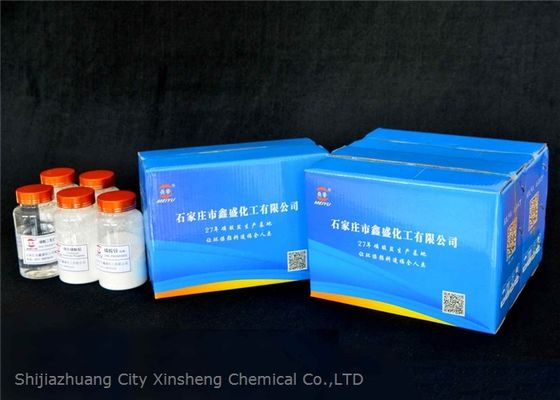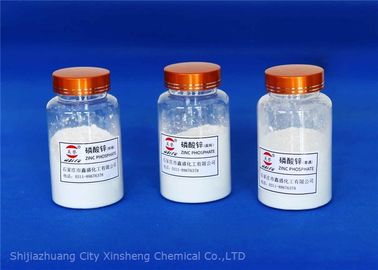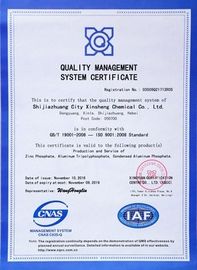Professional Grade Zinc Phosphate Pigment for High-Performance Anti-Corrosion

Contact me for free samples and coupons.
WhatsApp:0086 18588475571
Wechat: 0086 18588475571
Skype: sales10@aixton.com
If you have any concern, we provide 24-hour online help.
x| CAS No. | 7779-90-0 | Grade | Industrial Grade |
|---|---|---|---|
| Appearance | White Powder | Industry | Paint |
| 1.Application | Antirust Paint. Antirust Coating | 2.Application | Phosphating Treatment Of Steel And Flame Retardant Of Polymer Materials |
| Highlight | 7779-90-0 Chemical,anti rust zinc phosphate pigment,cas no 7779-90-0 zinc phosphate pigment |
||
TECHNICAL PARAMETERS OF ZINC PHOSPHATE:
| TEST ITEM | O-leve | High purity | EPMC | ZPA |
| Whiteness % | 80-90 | 805-90 | 80-90 | ≥95 |
| ZP% | ≥45 | ≥99.5 | ≥99.5 | ≥93 |
| Moisture % | ≤1.5 | ≤1.5 | ≤1.5 | ≤1.5 |
| PH Value | 5.5-7 | 5.5-7 | 5.5-7 | 5.5-7 |
| Oil absorption ml/100g | 30±5 | 30±5 | 30±5 | 30±5 |
| Residue on sieve 45μm | ≤0.5 | ≤0.1 | ≤0.1 | ≤0.1 |
| Cr % | -- | <0.005 | <0.003 | <0.003 |
| Pb % | -- | <0.005 | <0.005 | <0.01 |
| Standard | HG/T4824-2015 |
|||
Zinc phosphate is widely used as a chemical anti-rust pigment in oily and water-based primers
1.Usage:
Zinc phosphate is an important anti-rust pigment. It is one of the substitutes for lead and chromium anti-rust pigments in the paint industry. It has been used since 1965 and is widely used in oil-based and water-based primers as chemical anti-rust pigments. To improve and improve its anti-rust performance, it is currently the most widely used non-toxic anti-rust pigment. In addition to being environmentally friendly and non-toxic, zinc phosphate also has the following advantages:
White or light color, low refractive index, so it is very easy to color; can be dispersed in various base materials such as oil-based resin and water-based; coatings prepared with it have good construction performance, and can be combined with metal substrates or surface The paint film has strong adhesion.
2.Applications:
Mechanism: Standard zinc phosphate antirust pigment is zinc orthophosphate white powder, mainly dihydrate type (Zn3 (PO4) 2.2H2O) and mixed type of dihydrate and tetrahydrate (Zn3 (PO4) 2.4H2O) . Its anti-rust mechanism is very complicated. The main anti-rust mechanism of zinc orthophosphate pigment:
[Fe(H2O)6] 2+→ [Fe(H2O)5(OH)] ++H+
Zn3(PO4)2+H+→H3PO4 + Zn2+
H3PO4+Fe→Fe(H2PO4)2+H2
Fe(H2PO4)2+H2O→FeHPO4+H3PO4+H2O
FeHPO4+H2O→Fe3(PO4)2+H3PO4+H2O
The dissolved ferrous salt and iron salt are hydrolyzed to release protons, and then gradually react with zinc orthophosphate to sequentially generate water-soluble first-generation ferrous phosphate and second-generation ferrous phosphate, and finally insoluble third-generation ferrous phosphate. Passivation occurs on the surface of the metal substrate to produce Me (metal) -Zn-P2O5, a phosphating film with complex, dense and strong adhesion.
a) In addition to phosphating, they can also react with the carboxyl and hydroxyl groups in the base material and certain ions in the corrosive environment to form complexes, and this complex can react with corrosion products. A tightly adhered protective film is formed on the surface of the material.
b) The anti-rust effect of zinc orthophosphate is mainly due to the presence of crystal water, which slowly hydrolyzes to form zinc hydroxide and zinc diphosphate ions, the latter through the formation of a protective film composed of a complex with adhesive corrosion inhibition And realize anode protection.
c) Zinc orthophosphate slows down the diffusion rate of ammonium ions through the coating film, thereby playing a corrosion inhibitory effect.
3.Zinc phosphate chemical examination report:
![]()
![]()
Company Profile
In 1993, Xinle City Chengnan Antirust Material Factory was established, in 1999, the company expanded its business, and was honored to become a designated cooperative enterprise of the Ministry of Railways, in 2003, the company was officially renamed as Shijiazhuang Xinsheng Chemical Co. In 2021, the company moved to Xinle City Industrial Park in Hebei Province, covering an area of 13,620 square meters, and at the same time, the company introduced advanced equipment, technology, expanding production capacity, improve the performance of the products, so that the products sell well all over the world.
Xin Sheng has been recognized as "High and New Technology Enterprise", "Hebei Province Science and Technology-based Small and Medium Enterprises", "Specialized and Specialized New Enterprise" and other advanced enterprises. The company has strong R & D team, perfect testing equipment, rich experience in producing environmental protection anticorrosive pigments, professional phosphate production line, citing advanced reaction, drying, crushing, filling and other equipment, to achieve high-tech equipment automation, production intelligence, manufacturing standards are more stringent, the process is more refined, the performance of anticorrosive antirust pigment is more excellent. The annual production capacity is 3000 tons of zinc phosphate series, 3600 tons of aluminum tripolyphosphate series and 1500 tons of aluminum phosphate series. We have three major certification systems (ISO9001, ISO14001, ISO45001), which are in line with the European Union certification REACH registration, ROHS standard requirements, SGS testing. Our products are sold all over the country and exported abroad, exported to Southeast Asia and Europe.
Since the establishment of the company, all the staff to "high" standards, "strict" requirements, "fine" management, "seek" Effective, honest and trustworthy, quality to win the purpose, carry forward: "unity, credibility, dedication, solid" spirit of enterprise, unity, hard work, hard work, open up the market, and strive to forge ahead, so that the enterprise from small to large, and revitalize day by day.
Advantage: research and development of new products, improve product performance, specializing in customized phosphate products.
Business philosophy: high-tech innovation of high-quality products; win-win heart to help partners
Five standards: import to test, production to stabilize, quality assurance, flexible operation, factory to be responsible.
Values: truth, innovation, integrity, win-win, gratitude.
![]()



